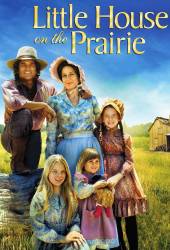
Factual error: Laura Ingalls Wilder was born in 1867. Ralph Waldo Emerson died in 1882, which means she was at the maximum 15-16 years old (and already married) in order to meet him IF he were to appear in 1882 which is not possible because: The problems with his memory had become embarrassing to Emerson, and he ceased his public appearances by 1879 (according to wikipedia).
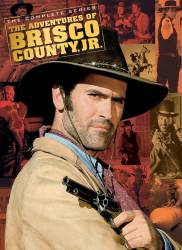
Factual error: A character in the episode has invented denim, but denim was invented in 1873 and was being used widely up to the time period of the series, which is set in 1893.
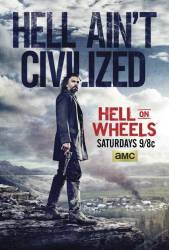
Factual error: When the whore is talking to Lily, she says "The first thing she should do (in her new tent) is to get the carpenter to lay some boards, or she will be saying hello to Mr. Trench Foot", referring to the medical issue related to feet in wet and unsanitary conditions. This disease of the feet was not referred to as this until World War One. (00:23:10)
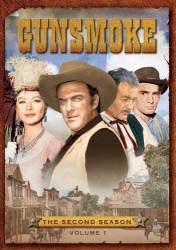
Factual error: In the opening scene Marshal Dillon walks in Boot Hill cemetery. Dates on grave markers include 1883 and 1882. At the end of the episode Marshal Dillon and Chester discuss an Army deserter who had just been acquitted of a murder that Marshal Dillon was sure he had committed. The army deserter is being sent back to his unit to fight the Sioux and Cheyenne Indians under Gen. Custer. The viewer knows the army deserter will soon die in the Battle of Little Big Horn on June 25, 1876 - seven years before the date on one of the grave markers. (00:00:25 - 00:24:30)
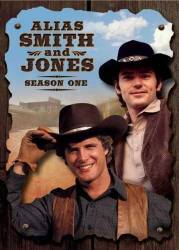
The Man Who Broke the Bank at Red Gap - S2-E17
Factual error: An egotistical, prissy and dishonest lawyer like Mr. Fletcher wouldn't make the mistake of allowing his name to be misspelled on his office door. It reads "Winfred Fletcher." His first name, as it's pronounced throughout the episode, is "Winford." (00:26:50)
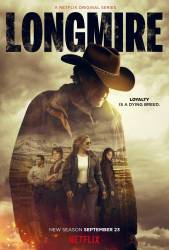
Factual error: Several times firearms registration is mentioned, but Wyoming has basically no gun laws. No registration is required, and no concealed carry permits are required.
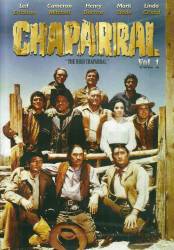
Factual error: Graham repeatedly sings a song he says his grandmother taught him: "Rufus Rastus Johnson Brown, What You Gonna Do When the Rent Come Round?" This was a Vaudeville stage composition written by Andrew B. Sterling and Harry Von Tilzer - in 1905. High Chaparral is set in the 1870s.
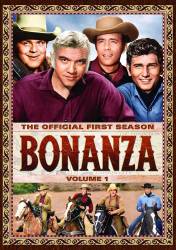
Factual error: Samuel Clemens, who has written several humorous tales for the Territorial Enterprise, tells the publisher he would like to start writing serious news stories. The publisher replies, "This is a newspaper, not a comic strip. You write it and I'll print it." The first comic strip, "The Little Bears," debuted in 1893 and the term "comic strip" did not enter the vocabulary until 1920. "Bonanza" is set in the 1860s.
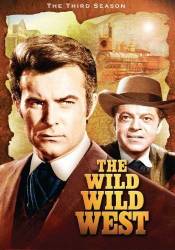
The Night of the Wolf - S2-E27
Factual error: Several airplane contrails are visible in the sky as West gallops his horse to Stefan's coronation.
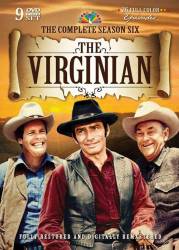
The Return of Golden Tom - S4-E25
Factual error: The Tedlers' kitchen is a 19th Century redress of a 20th Century set, but still includes a modern sink and faucet fixture where a water pump should be.
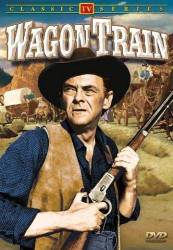
Factual error: At an 1868 church service, Mark sings "How Great Thou Art." While the tune of this hymn is 19th Century, the English lyrics he's singing weren't composed until the 1920s.
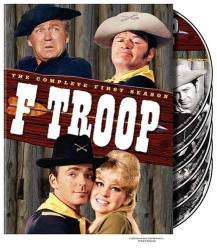
Factual error: We see how the accident-prone Wilton Parmenter was a soldier at Appotomatox during the Civil War when he sneezed. Union soldiers mistook his sneezing for a call to regroup and charge, winning the battle. Wilton Parmenter was awarded the Medal Of Honour. Accident-prone, even in his moment of glory, when the medal was pinned on Wilton's chest it pierced his skin, drawing blood. Wilton was therefore awarded the Purple Heart, becoming "the only soldier in history to get a medal for getting a medal." This was not possible, for the "Purple Heart" (or "Badge Of Military Merit", to use its proper title) awarded to US soldiers wounded in action, was only instituted in 1932. (Before somebody corrects me, George Washington did institute the award for some distinguished combatants during the War Of Independence, but it was never awarded during the nineteenth century, and revived in 1932).
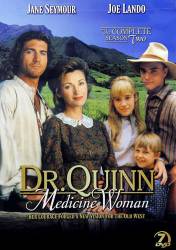
Factual error: None of the Swedish wedding traditions Ingrid mention actually existed in the 19th century and the bread she's baked is not traditionally Swedish. When she later speaks in her mother tongue it's definitely not Swedish.
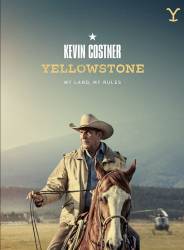
Factual error: Jamie is looking at his birth father's Montana State Prison inmate identification sheet. On the sheet, it lists his Social Security Number (SSN) as 4142-77-89332. However, in the United States, an SSN is a nine-digit number. (00:25:07)
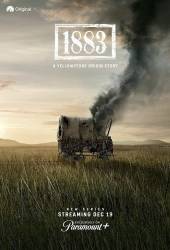
The Crossing - S1-E4
Factual error: The Dutton camp as well as Shea Brennon and Thomas are using modern thin Teflon/non-stick coated coffee mugs/pot.
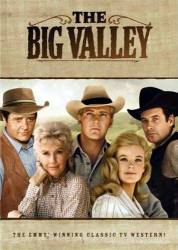
Last Train to the Fair - S1-E30
Factual error: At the end of the episode as the train heads towards Sacramento, above in the sky are jet vapor trails streaking across the sky.
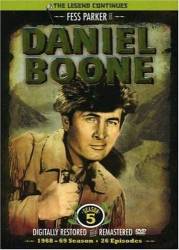
Factual error: At the end, Daniel Boone is met by the Marquis de Lafayette, played by an actor in his 60s. When he arrived in the American Colonies to aid the revolution, Lafayette was 19 years old.

Trace Decay - S1-E8
Factual error: When the armed party comes into town to steal the safe in the bar, the leader points a repeating rifle at a victim on the ground and shoots. When he fires a used cartridge flies from the gun. Repeating rifles do not eject cartridges when they are fired. Automatic weapons eject a spent cartridge when fired. Repeating rifles only eject the cartridge when the lever is wrenched. (00:32:20)

The Chalice - S2-E3
Factual error: After the opening credits, Caine is walking along the beach. On the beach behind him, you can see a modern long-board surfboard lying in the sand which gets caught up in a wave.
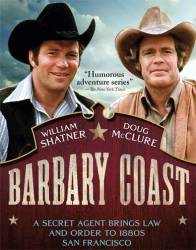
Factual error: Cable refers throughout the episode to "The Civil War." This term was not in use until well after the era in which the series is set. It was known at the time as "The War Between the States," or, in the South, "The War of Northern Aggression."
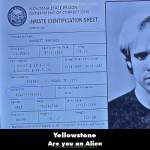
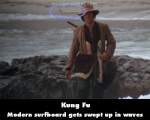
Suggested correction: The entire series was set in an alternate history of sorts, so most, if not all, historical "inaccuracies" cannot be regarded as mistakes.
zendaddy621